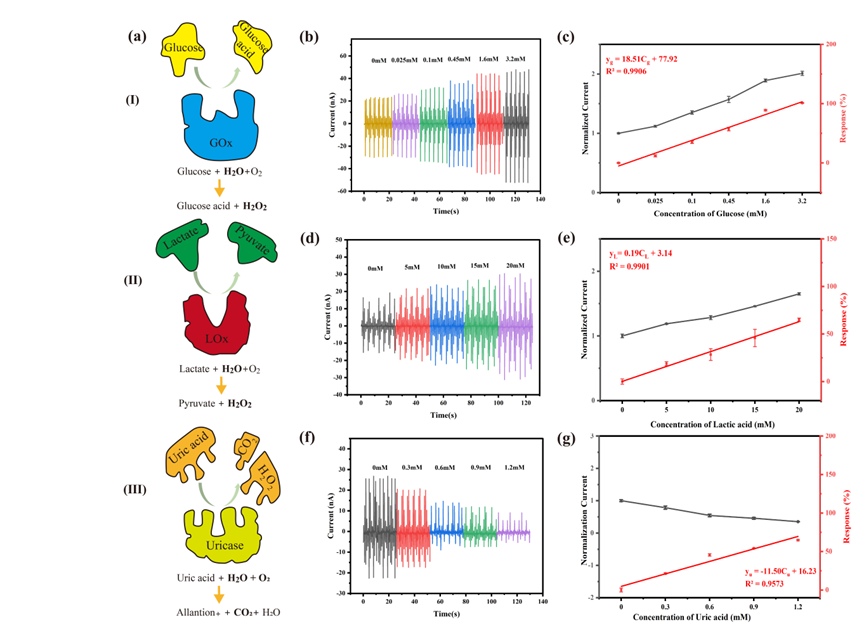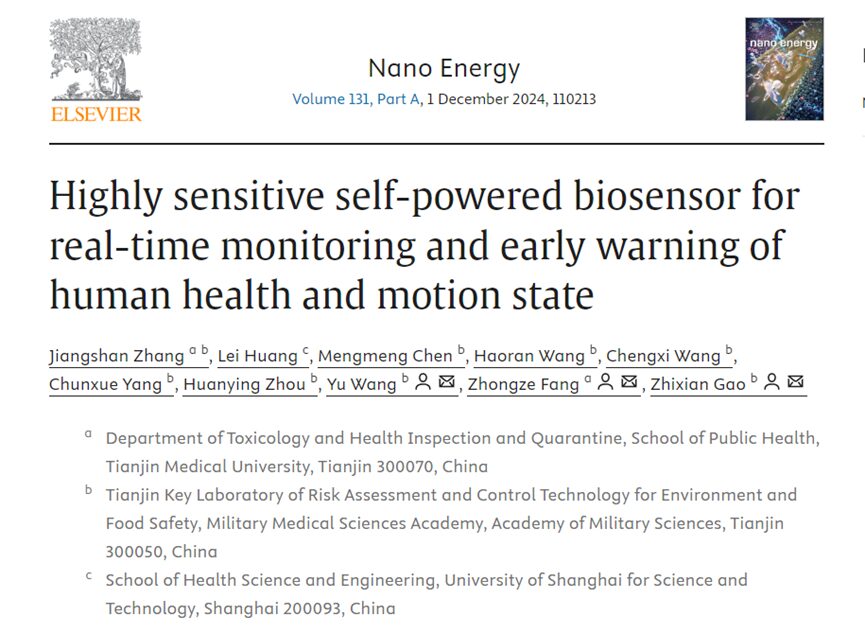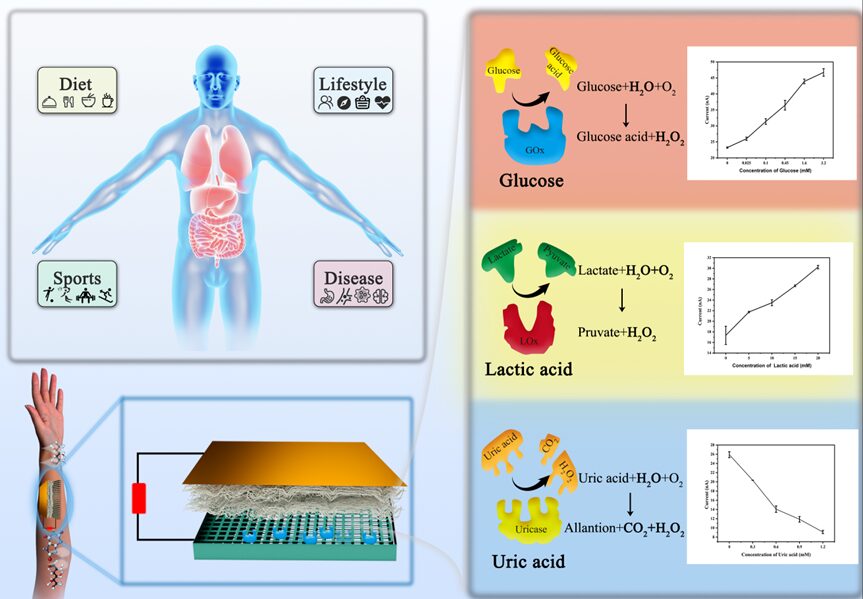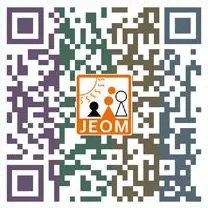This article is reproduced from the WeChat public account “Tianjin Medical University”
 Professor at Tianjin Medical University, PhD supervisor, Vice Dean of the School of Public Health, Executive Deputy Director of the National Preventive Medicine Experimental Teaching Center, Director of the Department of Health Toxicology and Health Inspection and Quarantine, and Deputy Director of Pediatric Research at the General Hospital. His main research direction is the establishment of a toxicity/disease prevention and control system based on metabolic characterization. He is a specially appointed professor in Tianjin, a leading talent in innovation promotion, a backbone innovative talent among young and middle-aged faculty in Tianjin universities, a member of the Tianjin 131 Talent Program, and an outstanding talent PI at Tianjin Medical University. He serves as the Secretary-General of the Gut Microbiome Branch of the Chinese Biophysical Society, a director of the Chinese Society of Environmental Mutagenesis, an executive director of the Youth Council of the Chinese Society of Toxicology, and the Chairman of the Toxicology Branch of the Tianjin Preventive Medicine Association. He has published over 150 SCI papers in authoritative academic journals in related fields such as Lancet sub-journals Ebiomedicine, Nano Energy, Environ. Pollut., Sci. Total Environ., J Clin. Endocrinol. Metab., Arch Toxicol, and Toxicol Appl Toxicol., with a total citation of over 6000 times.
Professor at Tianjin Medical University, PhD supervisor, Vice Dean of the School of Public Health, Executive Deputy Director of the National Preventive Medicine Experimental Teaching Center, Director of the Department of Health Toxicology and Health Inspection and Quarantine, and Deputy Director of Pediatric Research at the General Hospital. His main research direction is the establishment of a toxicity/disease prevention and control system based on metabolic characterization. He is a specially appointed professor in Tianjin, a leading talent in innovation promotion, a backbone innovative talent among young and middle-aged faculty in Tianjin universities, a member of the Tianjin 131 Talent Program, and an outstanding talent PI at Tianjin Medical University. He serves as the Secretary-General of the Gut Microbiome Branch of the Chinese Biophysical Society, a director of the Chinese Society of Environmental Mutagenesis, an executive director of the Youth Council of the Chinese Society of Toxicology, and the Chairman of the Toxicology Branch of the Tianjin Preventive Medicine Association. He has published over 150 SCI papers in authoritative academic journals in related fields such as Lancet sub-journals Ebiomedicine, Nano Energy, Environ. Pollut., Sci. Total Environ., J Clin. Endocrinol. Metab., Arch Toxicol, and Toxicol Appl Toxicol., with a total citation of over 6000 times.
Recently, Professor Fang Zhongze’s team at the School of Public Health published an original research paper titled “Highly sensitive self-powered biosensor for real-time monitoring and early warning of human health and motion state” in the internationally renowned materials journal Nano Energy. This research designed a self-powered friction electric sensor for monitoring metabolites in human body fluids, which can visualize early warnings of the body’s health status. The first author of the paper is Zhang Jiangshan, a master’s student from the 2022 cohort of the School of Public Health, with Researcher Gao Zhixian and Associate Researcher Wang Yu from the Institute of Environmental Medicine and Occupational Medicine at the Academy of Military Medical Sciences as co-corresponding authors.
Figure 1: Schematic diagram of a self-powered breathable skin friction electric biosensor for non-invasive real-time health monitoring
Wearable sensors have excellent performance in population health monitoring and cross-distance medical care. Their advanced sensing mechanisms enable real-time, rapid, non-invasive, and accurate monitoring of various physiological signals of the human body (body temperature, heart rate, motion, metabolic biomarkers, etc.), and combined with wireless communication devices, these information can be transmitted and stored in the cloud. These physiological signals contain rich information about the body’s health status and play an important role in early diagnosis and treatment of diseases. Traditional chemical batteries, as portable energy sources, have limitations in size, short lifespan, and the need for repeated charging, making it difficult to meet the enormous energy demands of the wearable market. Therefore, developing self-powered devices that integrate self-driving and sensing is currently a promising solution. The friction nanogenerator can collect various random energies present in the environment (such as human activity, raindrops, wind, etc.) by combining triboelectricity with electrostatic induction, providing a continuous energy source for various wearable electronic devices, thus achieving self-supply. Combining friction electric sensing with specific biological recognition elements can detect various metabolic biomarkers, providing necessary foundational information for health monitoring and medical diagnosis.
Research teams at home and abroad first combined contact electrification and electrostatic induction in 2012, designing the first triboelectric nanogenerator (TENG). The TENG designed in this study belongs to the contact-separation working mode TENG, as shown in the figure. Here, polyvinylidene fluoride (PVDF) film serves as the negative triboelectric material, while polyaniline (PANI) acts as the positive triboelectric material, with conductive copper foil and ITO serving as the electrodes for the two triboelectric materials. Initially, the two materials are far apart and do not carry any charge. When external force causes the PVDF film and PANI to come into contact, according to the “Wang’s jump” model, charge redistribution occurs due to the overlap of electron clouds, resulting in equal amounts of positive and negative charges on the surfaces of PVDF and PANI, as shown in Figure 2a (I). When the two triboelectric materials separate, a new potential difference is established between the two films, causing electrons to flow from the copper foil through the external circuit to the ITO to balance the established potential difference, as shown in Figure 2a (II). When the two triboelectric layers come into contact again, the distance between the friction layers decreases, causing the potential of the upper electrode to be higher than that of the lower electrode, thus electrons need to flow back from the external circuit to reduce the number of induced charges, as shown in Figure 2a (III). When the two layers touch again, all charges are neutralized, returning to a balanced state, as shown in Figure 2a (IV). When the contact-separation motion between the PANI film and PVDF film repeats, alternating current will continuously be generated.
 Figure 2: Working principle of the triboelectric nanogenerator
Figure 2: Working principle of the triboelectric nanogenerator
By coupling enzyme-catalyzed reactions with the triboelectric effect, when the enzymatic reaction occurs, glucose and lactic acid are decomposed into H2O2 and oxygen. H2O2 further decomposes to produce H+ and e–, leading to an increase in the surface charge density of the triboelectric layer, thus enhancing the triboelectric output current. Therefore, as the substrate concentration increases, the enzymatic reaction will provide more H+ and e–, further increasing the TENG’s triboelectric output current, as shown in Figure 3a (III). When uric acid reacts with uricase, the chemical state of the positive triboelectric layer PANI changes (protonation and deprotonation), preventing effective transfer of triboelectric charges, resulting in a decrease in TENG output current. Based on this, the TENG can convert the dynamic stimuli of the substrate into continuously varying AC signals, allowing for real-time monitoring of metabolites in body sweat without the presence of an external power source by recording the triboelectric signals generated by the coupling effect of enzymatic reactions and triboelectric charging. Moreover, based on the biomechanical information of different physical activities, it can capture and identify different activity states of the human body, better reflecting the current health status of the body.
 Figure 3: Response of the self-powered friction electric biosensor based on the triboelectric effect and enzyme-catalyzed reaction to different metabolites in sweat
Figure 3: Response of the self-powered friction electric biosensor based on the triboelectric effect and enzyme-catalyzed reaction to different metabolites in sweat
This research was supported by funding from the National Natural Science Foundation’s major research plan integration project, the National Natural Science Foundation’s general project, and the National Key Research and Development Program project.
Research results on the relationship between environmental factors (natural environment, social environment), occupational factors and population health
Shanghai Center for Disease Control and Prevention
● Chinese Science Citation Database (CSCD-C) source journal
● Chinese core journal (core journal in preventive medicine and health sciences)
● Chinese Science and Technology Paper Statistical Source Journal (Chinese Science and Technology core journal)
● Scopus database
● EBSCO database
● DOAJ database
● Embase database
● WHO Western Pacific Region Index Medicus (WPRIM)
● Japanese JST database
● American Chemical Abstracts
● Ulrich’s International Periodicals Directory
● British International Research Center for Agriculture and Biological Sciences
● American Cambridge Scientific Abstracts (Natural Science)
Website: www.jeom.org
Monthly publication, full text available for free on the official website
Phone: 021-62084529
E-mail: [email protected]



 Figure 2: Working principle of the triboelectric nanogenerator
Figure 2: Working principle of the triboelectric nanogenerator Figure 3: Response of the self-powered friction electric biosensor based on the triboelectric effect and enzyme-catalyzed reaction to different metabolites in sweat
Figure 3: Response of the self-powered friction electric biosensor based on the triboelectric effect and enzyme-catalyzed reaction to different metabolites in sweat
